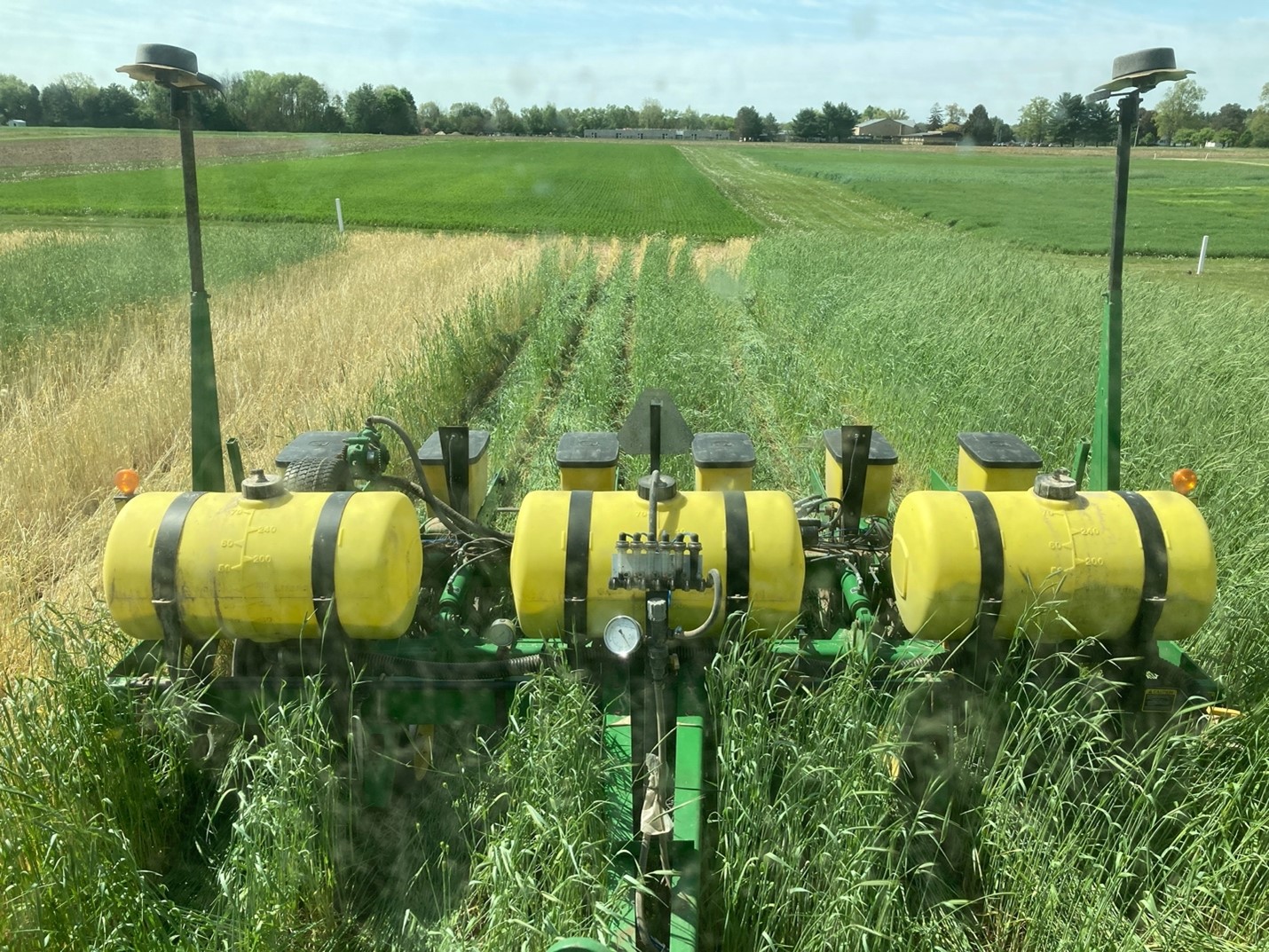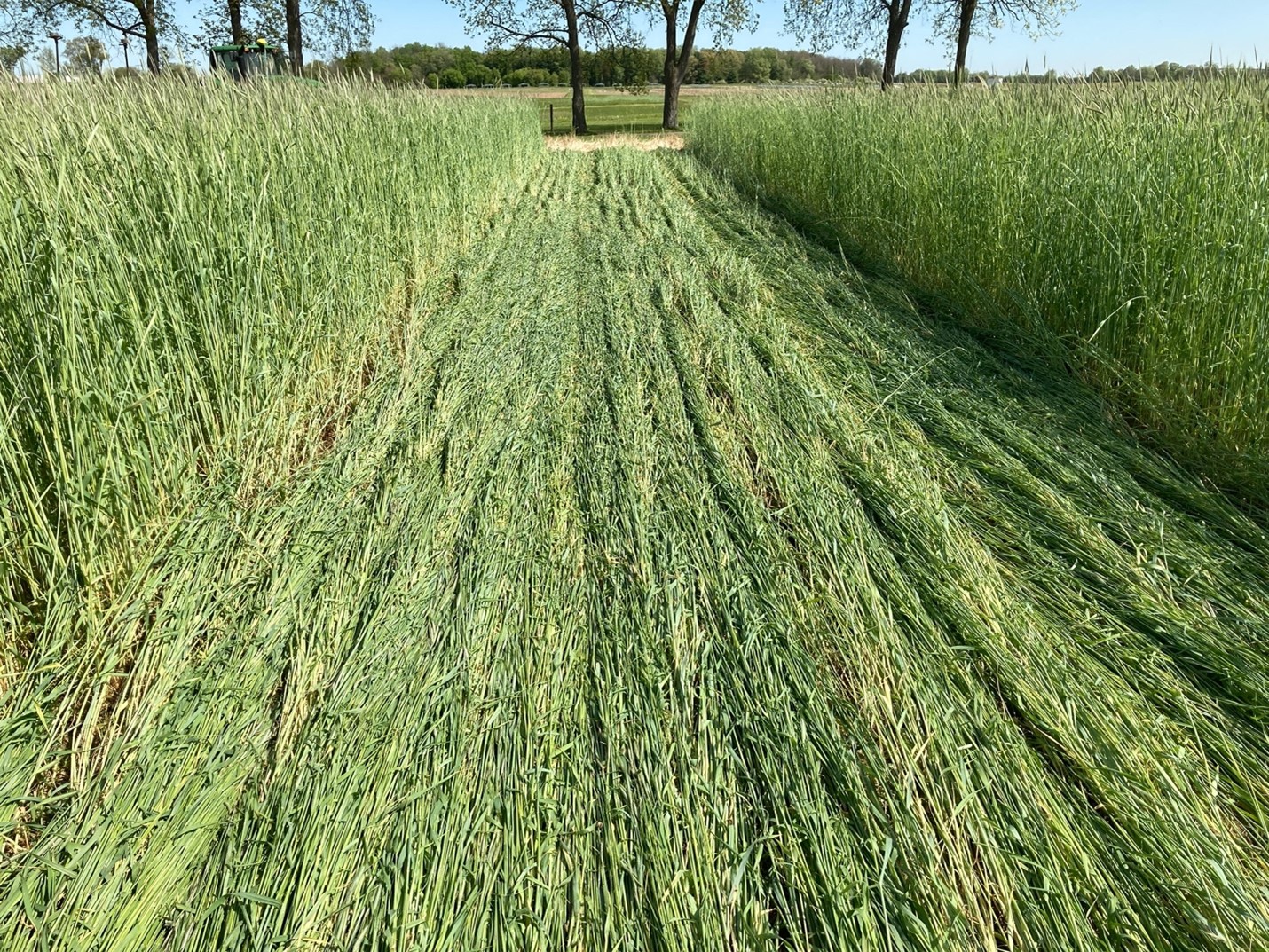How can I make the best decision on whether to “plant green” this year or not?
Farmers that use cover crops can decide to "plant green", which refers to planting a cash crop while the cover crop is still living. This article outlines the potential risks and considerations when deciding whether or not to plant green.

Corn and soybean farmers that grow cover crops have been exploring a new practice called “planting green,” which refers to the scenario where the cash crop is planted while the cover crop is still living. The cover crop is then terminated with herbicides soon after planting. At the Kellogg Biological Station (KBS), we have had success with this practice, achieving more cover crop growth, reducing weed pressure, and improving emergence of crops, but there are some inherent risks to consider. Luckily, we can reduce those risks by making decisions based on information we have available to us, related to the factors below.
- Consider current and expected soil moisture. The 2023 growing season started off cool and wet but has quickly transitioned to dry in Southwest Michigan. Cover crops left to grow during these periods can remove a substantial amount of water from the soil, leaving the top several inches too dry and hard to effectively seed corn and soybeans. When the forecast is for extended dry periods when we are thinking of planting our crops, we choose to terminate the cover crop a week or two before planting to conserve that moisture.
- Understand what herbicides are available to effectively terminate the cover crop after planting. Some cover crops like red clover work well to plant green with corn but can be more difficult to terminate with herbicides that are labelled for application after crop planting. For example, broadleaf herbicides like 2,4-D and Dicamba work well to terminate clover but can’t be used after planting corn. Sometimes problematic weeds growing in the cover crop also require additional herbicides to effectively kill, so it’s important to get the cover crop killed effectively, even if it needs to be done early.
- Evaluate nitrogen content in the cover crop and needs of the cash crop. Grass cover crops like cereal rye can have low nitrogen content, especially if they are left to accumulate a large amount of growth. When terminated, these low nitrogen cover crops can cause temporary soil nitrogen immobilization during periods when the crops need soil nitrogen. We don’t worry about this with soybeans since they are nitrogen fixers, but corn yield can be reduced if there’s not enough nitrogen available during early growth periods.
- Know your planter and what it’s capable of. When planting green, there’s a lot of plant material that can get caught up in rotating equipment, and living roots can make seed trench closure a challenge. In many cases, there are fairly easy solutions like removing row cleaners that residue can wrap around and adding spiked closing wheels to help close the seed trench. Each scenario can be different though depending on the cover crop and soil conditions, so it’s important to get to know the planter and what adjustments can be made to optimize the planting.
Sometimes when we plant green at KBS, I look at the field and wonder how the crop will ever come up through all that cover crop residue. Yet, in almost all cases, the crop has done well or even outstanding as long as we consider the factors noted above and make adjustments accordingly. Feel free to give this a try on some small areas of your farm to see what you think.

(Photo Credit: Brook Wilke)


(Photo Credit: Brook Wilke)



 Print
Print Email
Email




